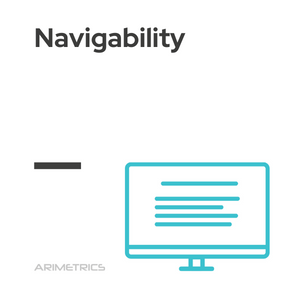
Definition:
Navigability is the simplicity with which a user can move through the whole of a website. They are all those features that allow users to move easily and intuitively. It is directly related to the user experience on the website and therefore should be a concept that every website owner must work to constantly improve. Together with web accessibility and usability, they make up the three main elements that determine the quality of a website.
The navigability of any website is determined according to 4 variables:
- Consistency:implies that all the elements of your website form a logical set; this implies that the style must follow a pattern on each of the pages so that the user always has the feeling of being browsing the same website. A coherent website facilitates the learning process of the user, who becomes familiar with its elements before and it is easier for him to move through it.
- Web structure:the internal structuring of any website is essential to optimize the user’s navigation process, the way in which the content is distributed must be equitable and logical. The better the classification of the contents of a website, the easier it will be for the user to find what they are looking for.
- Hierarchy: that is, the way in which the content within our website is prioritized, in this way we can guide the user to navigate through those contents that are more important or on which more work has been done and thus, achieve greater relevance for our website and greater added value for the user of it.
- Location:Visitors to our website must know at all times what part of the website is located. A very chaotic internal organization can generate discomfort in the user and that he is dislocated. To do this, the most advisable is an interface that indicates in an effective and simple way the position in which the user is within the whole of our website.
Navigability is one of the factors directly related to the quality of our website and that will therefore determine the relationship that our users have with it. A good navigability increases the engagement of our customers, who feel more comfortable on our website and therefore more likely to browse it again. Navigability will also determine the efficiency of our conversions funnel,pages with poor navigability usually involve high abandonment rates, with the consequent opportunity cost in the form of lost sales. At the level of positioning,the greater the navigability of a website, the greater the chances that it will appear in the top positions of search engines. In conclusion, navigability is a concept that needs to be worked on if we want to achieve better results through our website.
